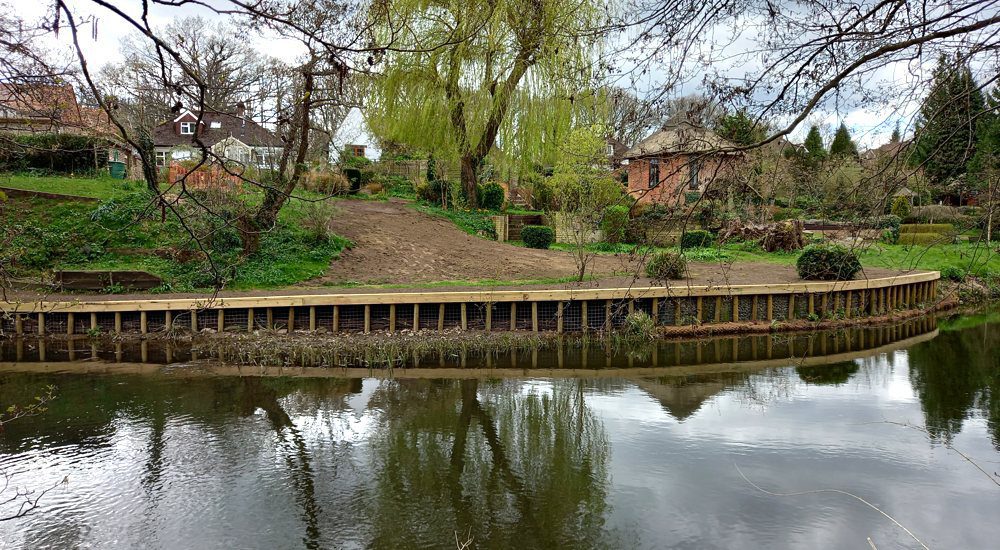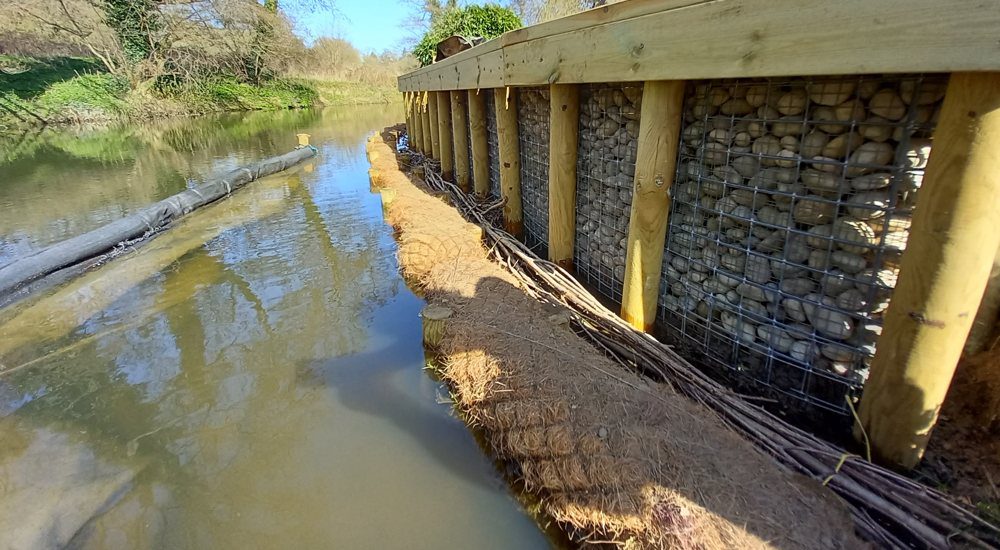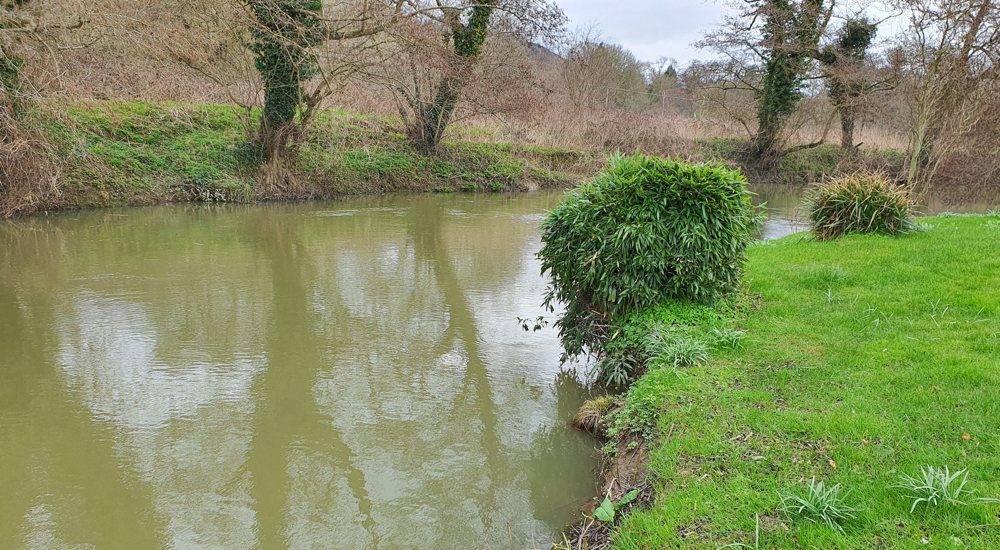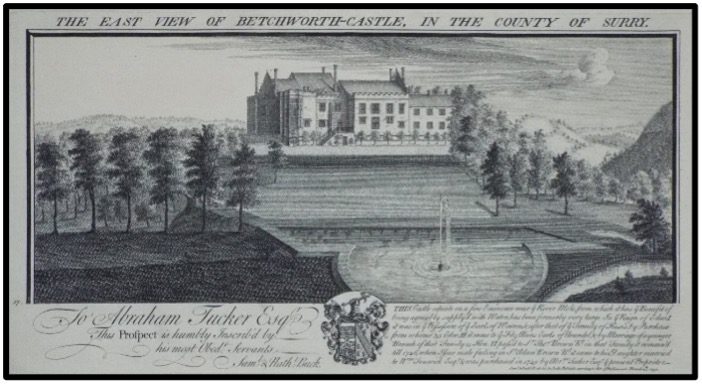Client: Private Client – Dorking, Surrey
Project Title: River Mole – Bank Erosion
Scope of works: Repair Riverbank Stretch of Garden
Issues
Sitting in the shadow of the ancient ruins of Betchworth Castle, this particular property sits on the River Mole. An existing brick weir about 10 metres downstream created a back eddy in times of flood and had consequently eaten away about 1.5m of the client’s garden.
As the River Mole is deemed to be a Main River by the EA, stage one of this project was to create a design, submit it to the EA and apply for permits. After a year of back and forth with the EA, designs were agreed, a permit granted, and work could commence to install a faggot and post detail with an oak waling and capping


Solutions
The upstream section required protection for several trees on the property which were growing on the water’s edge. The water of the River Mole had undermined them and had left the root structure exposed. The resulting void beneath the trees would, in time, have washed out all of the remaining soil and destablised the bank. The solution here was to install a protective system in front of the trees to stop further water ingress and form a green pathway using faggots and coir logs.
The downstream section was protected using a series of driven posts to which coir rolls, faggots and a fixed mesh & stone arrangement installed, which will provide support and reduce future erosion.
The coir rolls were planted with mature native UK aquatic plants. Turf was then pinned to the top terraces.
Timber edges were added to the top of the bank which formed a secure edge for grass growth and mowing by the owner.


Challenges
Beneath the lawn of this property, there were many hidden underground water storage caverns. Great care had to be taken not to disturb these caverns.
The garden was also very well established and the pride and joy of the owners, so again, every care was taken to ensure there was no damage caused to the garden and in particular, the plants


Background
Historically, the garden of this property was part of the pumping process which was used to pump water up to Betchworth Castle.
The Castle started off life in the 11th Century as an earthwork fortress and was turned into a stone castle in 1379. It was subsequently rebuilt as a fortified medieval manor house which was developed through the centuries. In the 1700’s it was owned by Abraham Tucker, a gentleman philosopher, and boasted a formal park with avenues of trees and a water garden with a fountain. When Mr Tucker died it was neglected and then finally abandoned in the 1830’s and partly demolished with the remaining walls left as a picturesque folly.
In 2011 a local resident and historian bought Betchworth Castle for £1 and together with volunteers started the conservation project, which allowed access to the site for the first time in many years.
The ruined Castle now sits within the grounds of Betchworth Golf Course.




